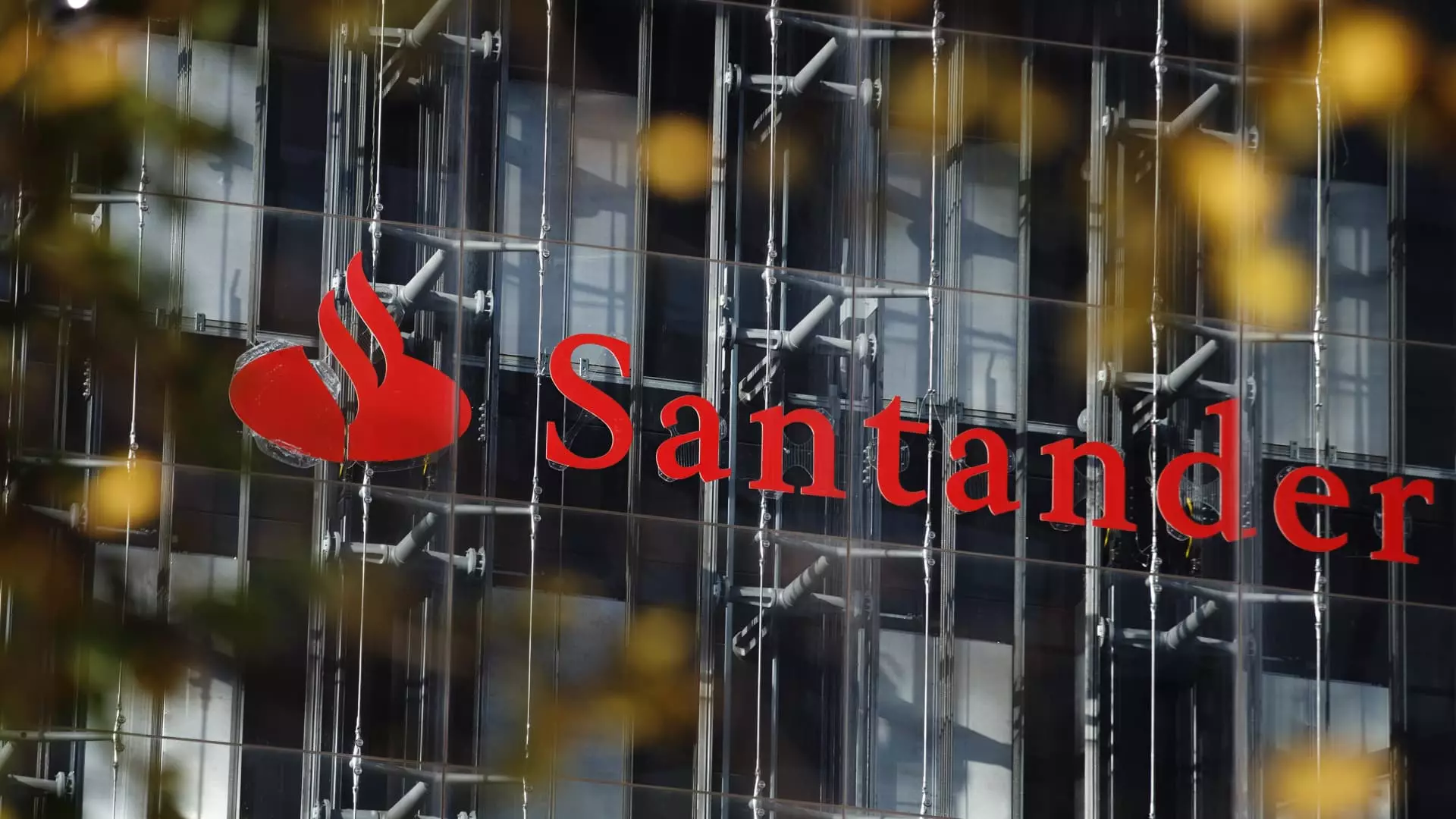In a surprising twist in the European banking landscape, Banco Santander has surpassed UBS to become the largest bank by market capitalization on the continent. This development is not merely a matter of numbers; it represents a critical shift in the banking sector, exacerbated by the chaotic repercussions of U.S. trade tariffs. Santander’s market cap of €91.3 billion ($103.78 billion) starkly contrasts with UBS’s €79.5 billion ($97.23 billion), revealing much more than financial metrics. It is, for all intents and purposes, a reflection of adaptability and resilience in the face of adversity.
The timeline draws attention to a specific turning point: the announcement of U.S. tariffs by President Donald Trump on April 2. This move sent UBS’s stock tumbling downwards by over 17 percent year-to-date, while Santander saw an impressive rise of nearly 35 percent. These fluctuations are not merely superficial; they reveal foundational vulnerabilities in UBS’s structure and strategy that must be examined closely.
Understanding Market Vulnerabilities
UBS has long rested its laurels on its global wealth management division, particularly in the U.S. market. This reliance now appears to be a double-edged sword. While wealth management can be lucrative, it has left UBS exposed to external fluctuations like international tariffs. The ongoing uncertainty surrounding new capital requirements following its acquisition of Credit Suisse only heightens the anxiety. This is a cautionary tale: over-dependence on a particular market can backfire when the geopolitical landscape shifts dramatically.
Conversely, Santander’s diversified approach has positioned it favorably. Despite only recording 9 percent of its profits from the U.S. in 2024, the bank is tapping into lucrative auto lending and exploring partnerships that could galvanize its presence in new markets. In essence, while UBS is an iconic symbol of wealth management, Santander is showcasing the strength that comes from adaptability and a multifaceted business strategy.
The Impact of Currency Fluctuations
There’s also significant attention that needs to be paid to the currency dynamics at play. The Swiss franc, often regarded as a safe haven asset, has risen by 8 percent against the U.S. dollar since the tariffs took effect. This appreciation may threaten UBS’s profit margins and enhance operational costs, thus placing it in a precarious position.
On the other hand, the European Central Bank’s intentions to lower rates provide a counterbalance for Santander. As both banks grapple with their respective currency pressures, the Eurozone’s monetary policy trajectory seems more supportive of Santander’s growth prospects.
Public Perception and Confidence
Another noteworthy aspect lies in the perception of these banks. Santander’s ascent sends a positive message, suggesting that stability and growth are achievable even in challenging climates. The bank’s proactive measures illustrate a commitment to navigate these tumultuous waters effectively, building investor confidence and fostering goodwill.
UBS, however, is treading through a fog of uncertainty, compounded by risks and looming regulatory challenges. The tarnished image from absorbing Credit Suisse might take time to shake off. The public sees not just numbers but narratives, and right now, Santander is encapsulating a story of resilience, while UBS’s tale feels mired in hesitation and doubt.
Future Outlook: Opportunities and Threats
Looking ahead, Santander seems poised for greater growth opportunities, especially with significant spending anticipated in the defense sector due to the European Union’s recent ReArm initiative. This could translate into increased borrowing activity, a sector where Santander has already established a firm foothold.
UBS must astutely navigate its landscape and perhaps rethink its dependency on wealth management. It remains to be seen whether it can innovate rapidly in response to the evolving global market. The real question for both banks is not merely who stands tallest today, but who will be agile enough to ride the tides of change without teetering into the abyss.
In sum, while the shift in market caps illuminates current standings, it is but a snapshot of a larger, more complex narrative unfolding in European banking. Santander’s strategic foresight starkly contrasts with UBS’s myopic reliance on wealth management, setting the stage for an intriguing and uncertain battle in the years to come.

